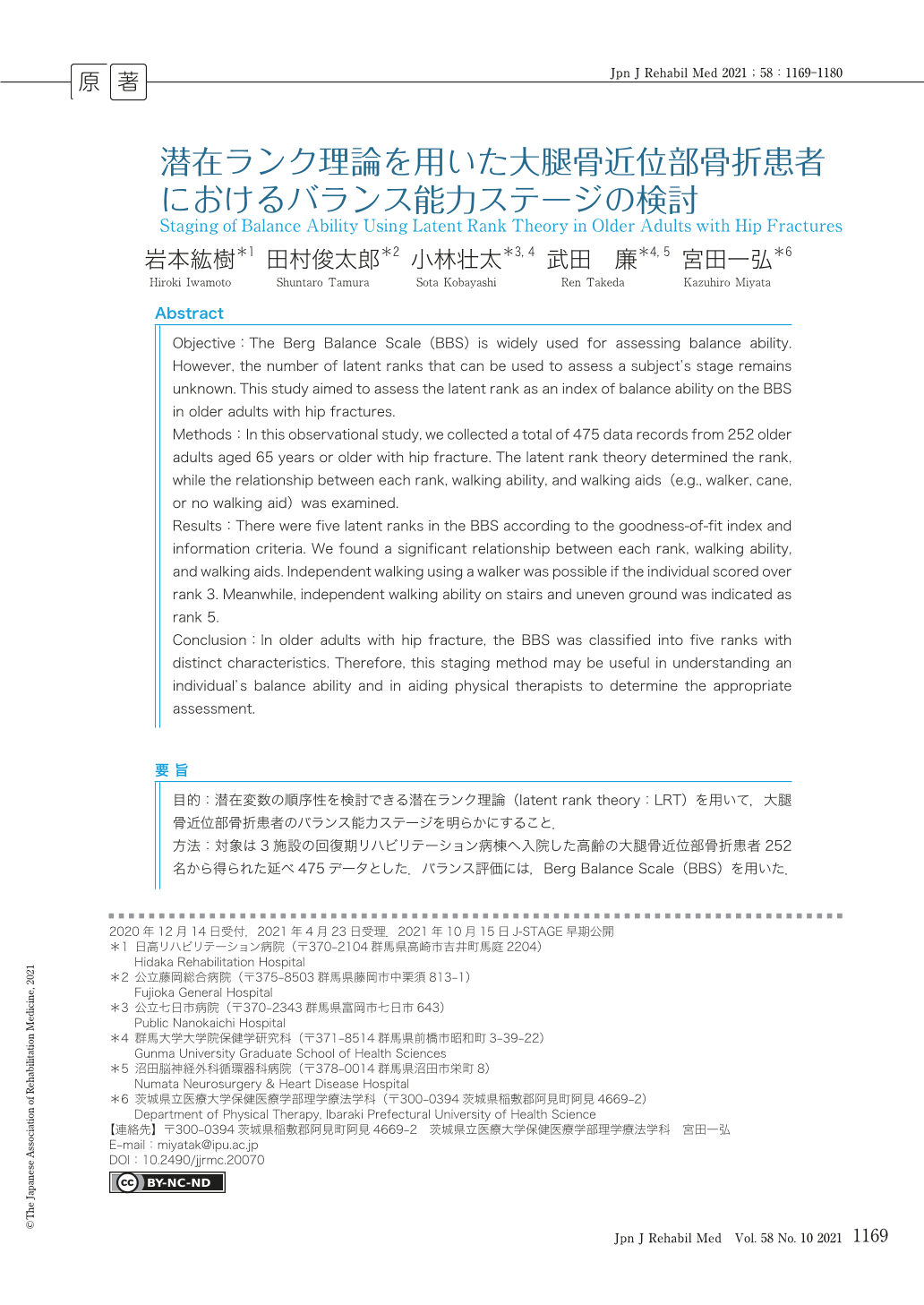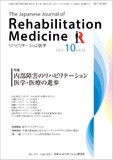Japanese
English
- 販売していません
- Abstract 文献概要
- 1ページ目 Look Inside
- 参考文献 Reference
要旨
目的:潜在変数の順序性を検討できる潜在ランク理論(latent rank theory:LRT)を用いて,大腿骨近位部骨折患者のバランス能力ステージを明らかにすること.
方法:対象は3施設の回復期リハビリテーション病棟へ入院した高齢の大腿骨近位部骨折患者252名から得られた延べ475データとした.バランス評価には,Berg Balance Scale(BBS)を用いた.解析は,LRTを実施し適合度指標と情報量規準の結果から潜在ランク数を決定し,各ランクと歩行自立度と歩行補助具の関連性を検討した.
結果:LRTの結果,BBSは5ランク数に分類したモデルが最も良好であった.各ランクの平均値は,ランク1が17.1点,2が24.6点,3が34.8点,4が42.9点,5が47.3点であり,単調増加していたためLRTの仮定は満たされていた.各ランクと歩行自立度,歩行補助具には有意な関連が認められ,ランク3以上で歩行器などを用いて歩行自立できる者が出現し,ランク5以外では階段や不整地を自立している者はいなかった.
結論:大腿骨近位部骨折患者において,BBSは5つのステージに分類でき,バランス能力ステージ別に異なる特徴を有していた.これにより,BBSの得点に応じたバランス能力の把握が容易となる可能性が示唆された.
Objective:The Berg Balance Scale (BBS) is widely used for assessing balance ability. However, the number of latent ranks that can be used to assess a subject's stage remains unknown. This study aimed to assess the latent rank as an index of balance ability on the BBS in older adults with hip fractures.
Methods:In this observational study, we collected a total of 475 data records from 252 older adults aged 65 years or older with hip fracture. The latent rank theory determined the rank, while the relationship between each rank, walking ability, and walking aids (e.g., walker, cane, or no walking aid) was examined.
Results:There were five latent ranks in the BBS according to the goodness-of-fit index and information criteria. We found a significant relationship between each rank, walking ability, and walking aids. Independent walking using a walker was possible if the individual scored over rank 3. Meanwhile, independent walking ability on stairs and uneven ground was indicated as rank 5.
Conclusion:In older adults with hip fracture, the BBS was classified into five ranks with distinct characteristics. Therefore, this staging method may be useful in understanding an individual's balance ability and in aiding physical therapists to determine the appropriate assessment.

Copyright © 2021, The Japanese Association of Rehabilitation Medicine. All rights reserved.


